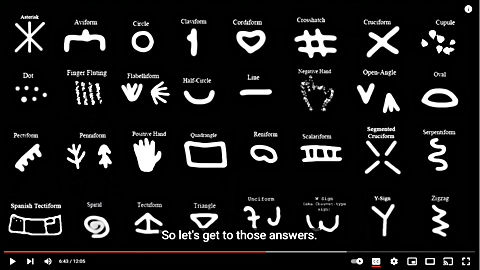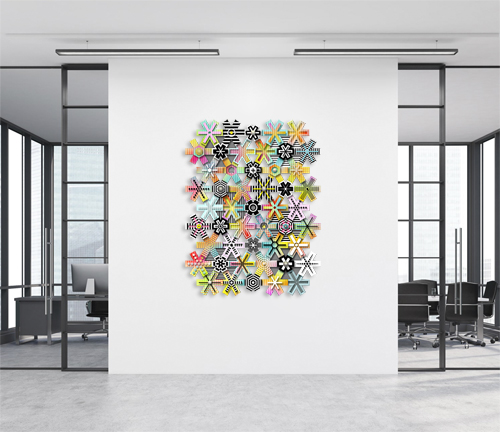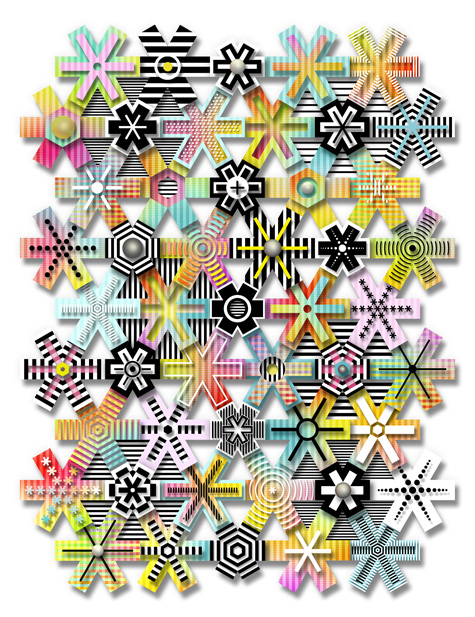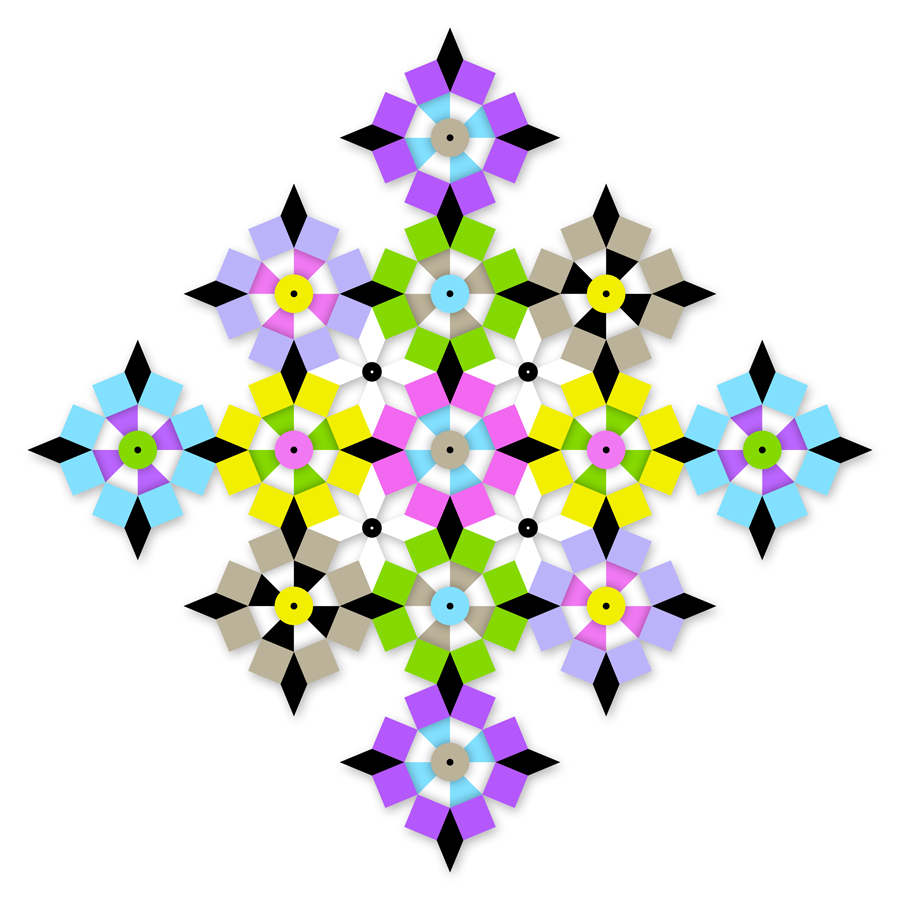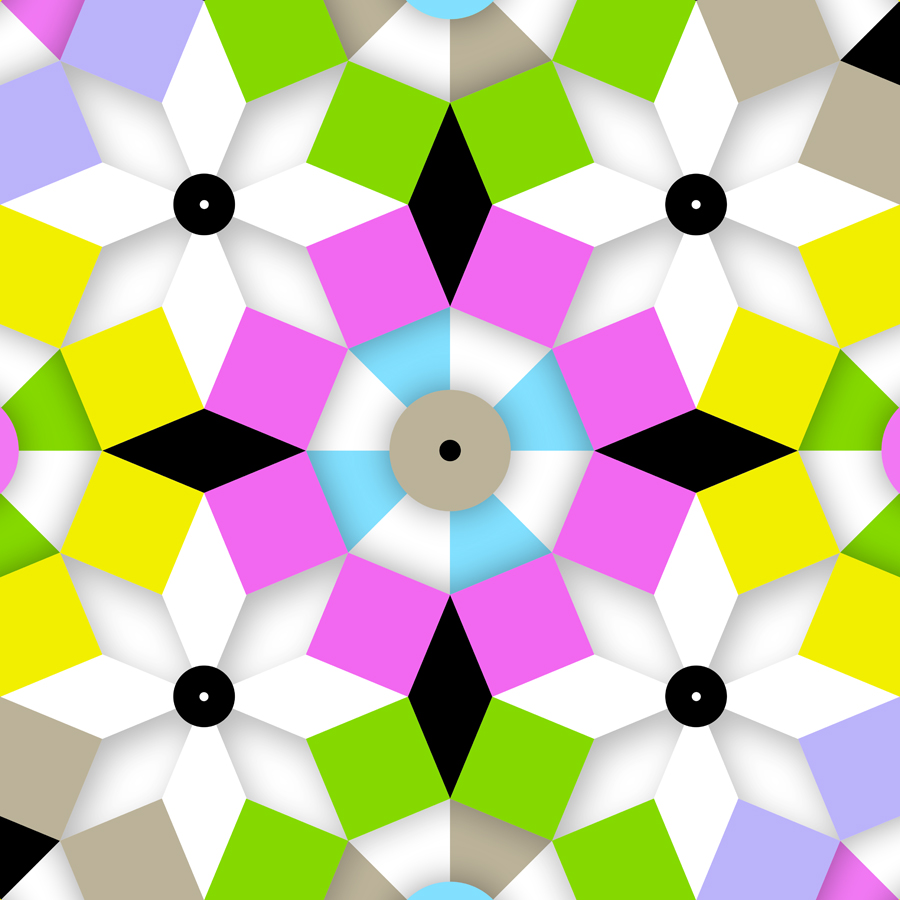click on image to enlarge
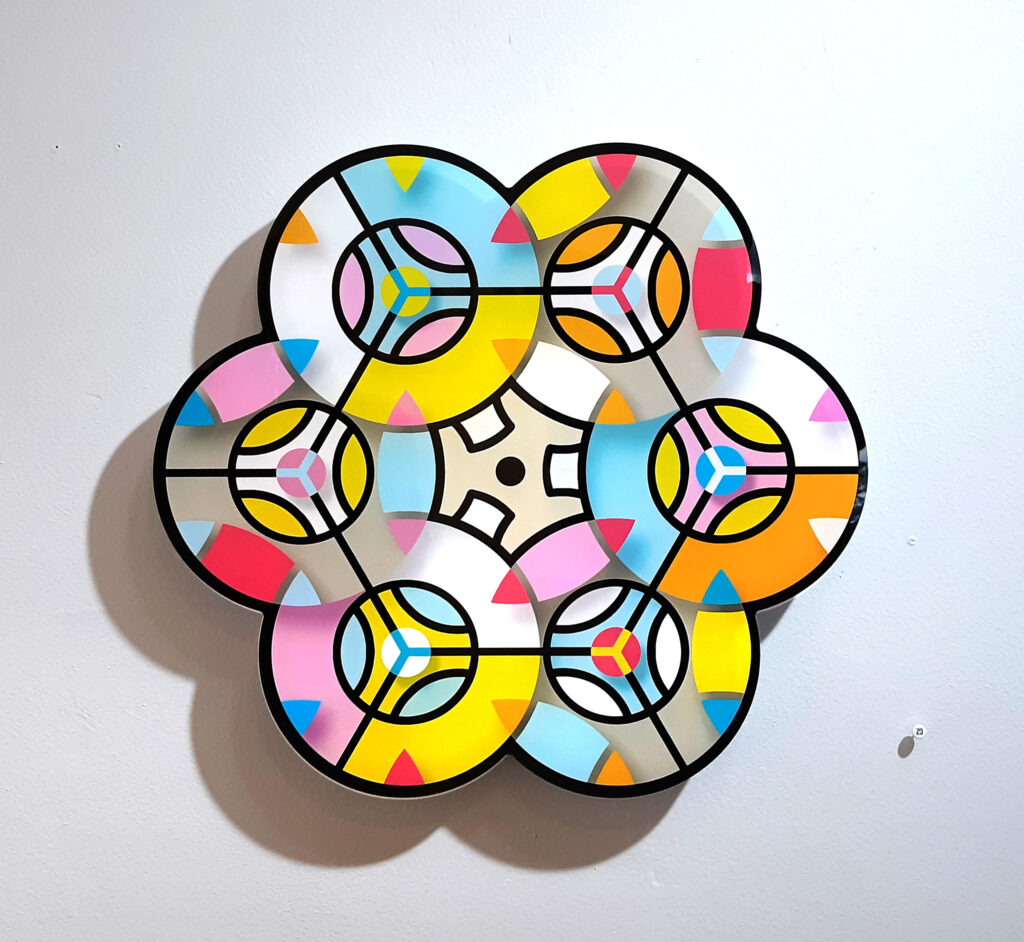
uv cured inkjet on cnc cut acrylic and composite aluminum, 13.8″h x 15″w, edition of 3
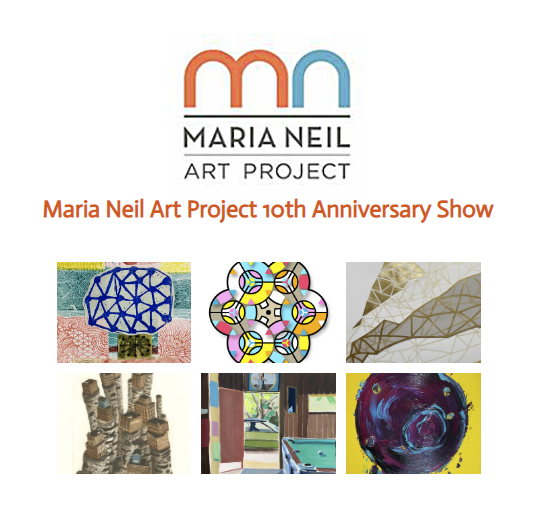
pictured on bottom row: Amy Casey, Timothy Callaghan, Dan Miller
Maria Neil Art Project – A project by John Farina and Adam Tully celebrates their 10th Anniversary with a show that opened last night. They have been a special presence in the Cleveland art community over the years with their collecting and patronage of the areas artists and with MNAP bringing their love of the arts to the public. They asked the artists who exhibited in their exhibitions to submit a small work. My work is in great company with the wonderful other artists work.
I was honored when they asked me to have a solo exhibition in 2015. My show with them titled BITS IN PIECES included among the 20 plus digital prints something new for me, 3d printed sculptures titled MODEL CITIZENS. As part of their mission, they encourage artists to flex their muscles and bring something special hence the word “Project” in the name. The challenge led me to producing my first 3d work since my architecture career ended in 2004. I am again working in 3d on a 3d printed piece for the upcoming show “W/O Limits” at the Artists Archives of the Western Reserve.
For the 10th Anniversary show, I created this small work, CIRCULUX REDUX, uv cured inkjet on cnc cut acrylic, 15″ x 13.8″. A child of the 60s, the analog days, I played 45 rpm records. Arranged at the corner points of a hexagon, the central elements are a nod to those plastic adapters you put on the spindle to play 45 rpms.
MariaNeilArtProject.com
15517 Waterloo Rd, Cleveland, OH 44110
Opening Reception: Friday, June 3rd 5:00-8:00p.m.On view through July 2022. Hours by appointment only. Please send an email to schedule an appointment.
[email protected]

